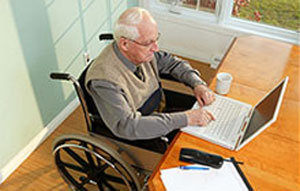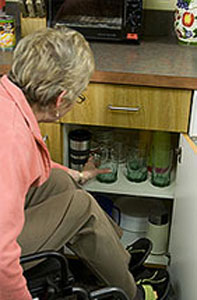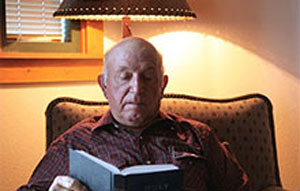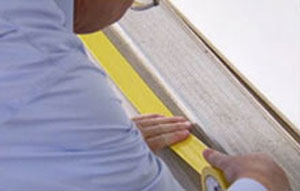Safety Tips
Prevent Falls
Here are some ways to help reduce a person’s risk of falling:
- Have the person exercise regularly. Tai Chi is a good exercise for older adults to increase strength and improve balance.
- Have their doctor or nurse review their medicines to reduce any drug side effects and interactions,
- Have their eyes checked by an eye doctor each year
- Improve the lighting in the home
- Have a person regularly use assist devices (as ordered by their doctor), such as a cane or walker.
- Be sure the person uses handrails when walking on stairs
- Have the person get up slowly from a lying or a sitting position
- Have the person wear shoes inside and outside the house
- Have the person avoid wearing slippers or going barefoot
- And follow our Safety Tips for making rooms in the home safe.

Making Rooms in the Home Safe
Prevention is a pound of cure. Most falls happen in the home during everyday activities. Take steps to make the home of the person you care for safer. Check each room of the home where the person lives. Have the person help to decide on ways to reduce hazards. See our lesson on Fall Prevention for ways you can make each room of a home and the outside of the home safer.

Kitchen
- It is best to remove any throw rugs. Or you can secure mats or throw rugs with nonskid backing or tacks.
- Store dishes and food within easy reach. This may mean placing food and dishes in lower cabinets, especially if the person uses a wheelchair.
- Install Lazy Susans or pull out shelves for easy access.
- Clean up grease, water and other liquid spills immediately. Do not wax floors.
- Install direct lighting over the area where the person cooks. High intensity light is best. An older adult needs three times as much light as someone twenty years old.
- Non gloss finishes on cabinets and countertops is best. This reduces glare so a person can see more clearly.
Living Room
- Place furniture in a way to open up the space through rooms and hallways.
- Reduce clutter such as flower pots, magazines, foot stools, children’s or pet’s toys, electric cords.
- Keep papers and books off of the floor.
- Secure all carpets with nonskid backing.
- Remove shag carpeting, which often gets caught on shoes, toenails and walkers.
- Have enough electric outlets to be able to plug a light or TV into a nearby outlet. Secure electric cords against baseboards.
- Install direct lighting over the area where the person reads or does hobby work. High intensity light is best.
- Have sheer curtains in living area to reduce glare.
- Remove glass top tables – falling on one of these can cause serious injury. Sturdy wooden tables with round corners are best.
- Do not let pets jump on the person.

Stairs
- Paint edges of concrete stairs bright yellow, orange or white. This helps a person see the edges more clearly.
- Install treads with uniform depth of 9 inches and 6-inch risers – making steps equal size.
- Install handrails along side of any stairway. Be sure stairways are well lighted with switches at top and bottom.
- Repair any loose handrails or loose, uneven steps.
- Put overhead lights at the top and bottom of stairs.
- Install broad beam lighting for outside stairs and walkways.
- Have the person take their time when going up or down stairs.
- Do not use stairs to store boxes, tools or odds and ends.

Bathroom


- Always have a night light in the bathroom.
- Keep towels and clothing off of the floor.
- Use bathroom rugs with nonskid backing.
- Install grab bars by toilets and in the shower and tub. Have the person choose either vertical or horizontal placement of grab bars.
- Vary the colors in the bathroom. An older person needs to see edges of tubs and shower stalls. Add bright decals or even red tape.
Bedroom

- Keep a lighted phone within eash reach next to the person’s bed.
- When getting up to the bathroom, have the person sit on the edge of the bed for a minute before getting up.
Outside
- Keep off of ice. Many people slip on ice when trying to get to the mailbox or pick up the paper.
- Repair any stone walkways that have cracks or holes.